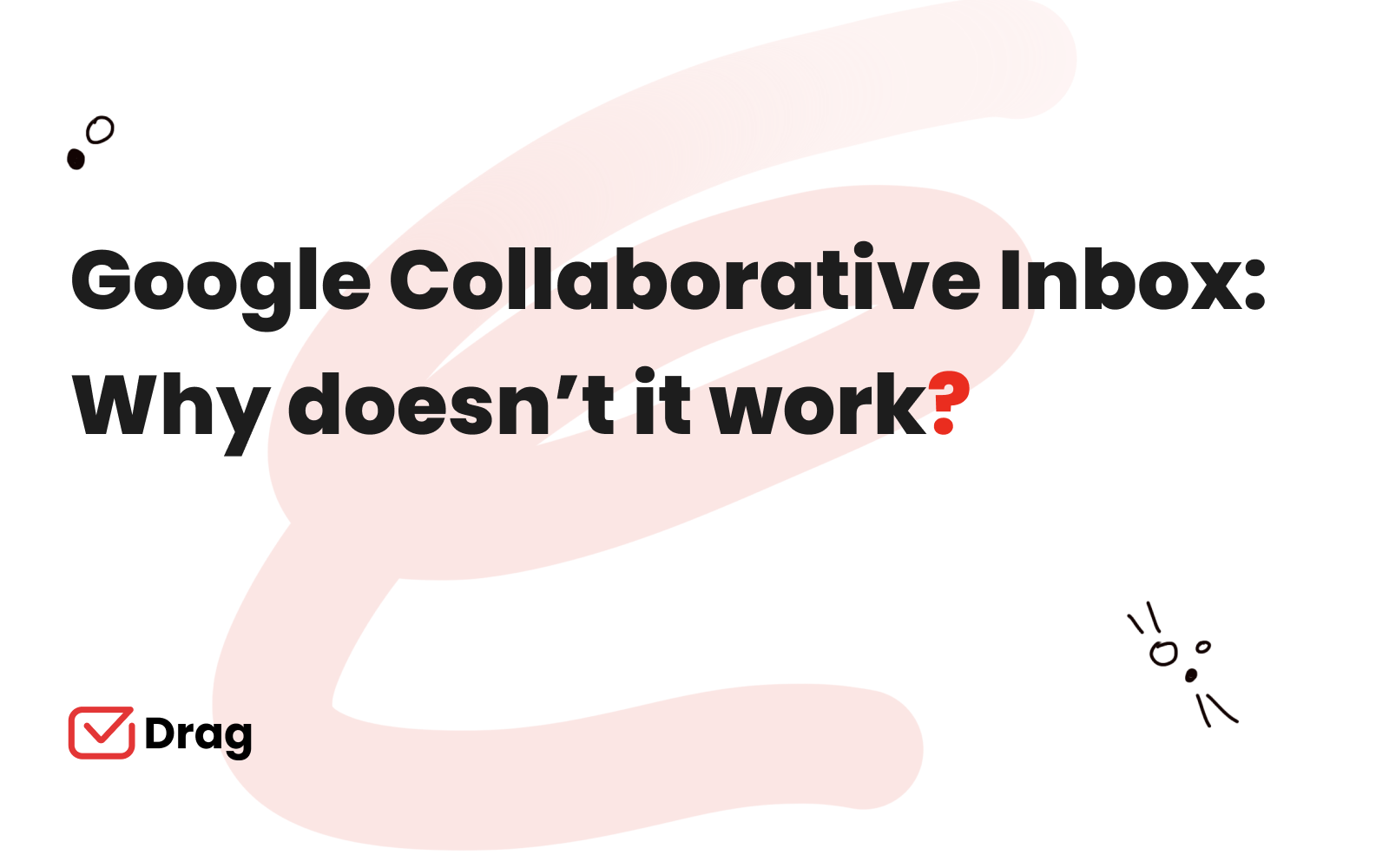
Running a successful business requires you to have the right tools for your specific type of business. If your workflows are email-driven, for example, you can never go wrong with email management. And shared inboxes are a core tool for email management, which is what we are going to explore now.
This article focuses on the Google Groups Collaborative Inbox, its features and when it may (or may not) be useful for your email-driven business.
What is a Collaborative Inbox?
A collaborative inbox (or shared inbox) allows teams to collaborate on emails. The idea is that team members no longer have to forward emails to one another or share the same email account. They can manage all emails from inside the same inbox while being logged into their own individual accounts.
Collaborative Inboxes are broadly used across different departments. For example, customer support teams typically operate a [email protected] inbox, sales teams operate [email protected] and so on.
Typically, shared inbox tools also offer other collaboration features besides being able to manage shared emails. Core features include email assignment, internal email comments, automations, among others.
What about the Google Groups Collaborative Inbox?
Google Groups is not a new tool. It was developed in 2001 as a discussion space where group members can communicate through either a web forum or an email list. It is great for one-to-many type of communication, but historically it has never been focused on collaboration on back-and-forth email communication.
The “Collaborative Inbox” features are not default in Google Groups. They are optional and need to be activated from inside the Google Groups you’re working on. These extra features make Google Groups more of a collaborative tool. This is how it looks:
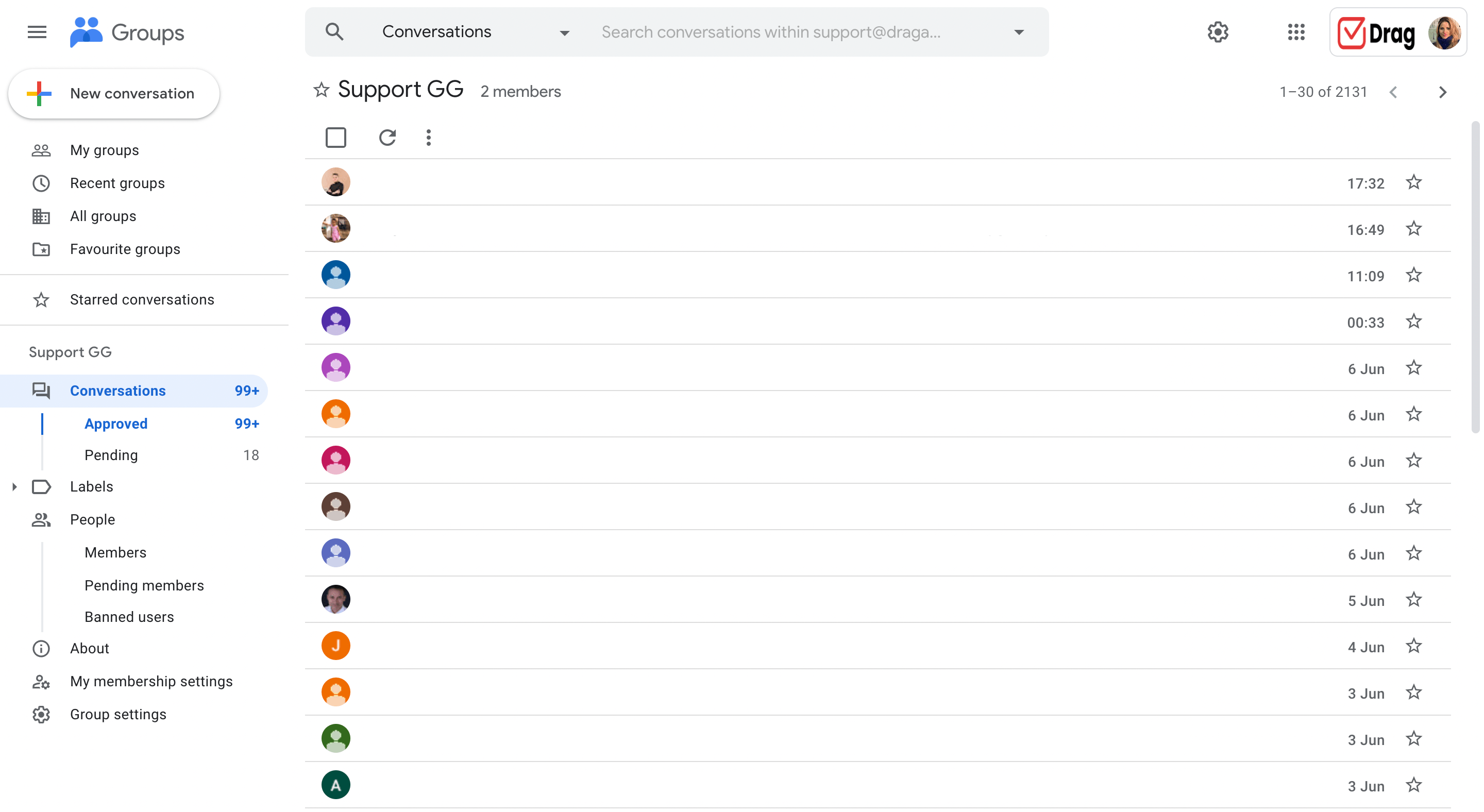
Note that Google Groups have their own interface. If you are looking for a Gmail shared inbox, Google Groups is not the best option for you. There are other options such as Drag, that turns Gmail into a shared inbox, where you can collaborate on emails directly from inside Gmail.
Still, Google Groups Collaborative Inbox offers a series of collaboration features from inside their own interface.
Features
Google collaborative inbox may not entirely revolutionize email collaboration but it may create a positive impact. For starters, it is free, which makes it ideal for small organizations working on a tight budget. Furthermore, it makes it easier to manage incoming emails. The reason being, different people can respond from a single email address without the need to share login information. Key features are:
- Email assignment: Clearly define who is responsible for each email.
- Email statuses: Mark an email as complete, duplicate, or no action needed.
- Filter: Easily filter emails by assignee or status.
When does it become substandard to your business?
The Google Groups Collaborative Inbox offers basic collaboration features. However, companies looking to operate workflows such as Help Desk or sales pipeline from a shared inbox need more features. The key limitation that lead companies to look for Google Groups alternatives are:
1. No integration to Gmail
Your team will have a hard time working with Google’s collaborative inbox. Its user interface is not as intuitive as Gmail, and the fact that they have to switch tabs to respond to emails makes things a lot worse. There are also high chances of some emails falling through the cracks.
Besides, switching tabs is a major distraction for the support team, and this adversely affects their productivity. It will help to invest in a tool that lets the team work right from Gmail for higher productivity
2. Poor email syncing
To overcome the lack of Gmail integration, some teams use the Google Groups Collaborative Inbox as a mailing list. This means that emails sent to the Group email address are sent to all team members’ individual Gmail inboxes. This does not facilitate seamless emails syncing, which is a major turn off.
In this case, the team members have to cc the Google Collaborative inbox email ID. Otherwise, the rest of the team gets left in the dark, not knowing if the message got replied or not. Suppose you were using Google’s Collaborative Inbox as a mailing list from Gmail. When an email arrives, a team member replies to it from their personal inbox.
If that team member forgets to copy the Groups ID in the response, you can’t tell if the email has been responded. Then, when the original sender replies back, the email only gets to that single team member, not to the Collaborative Inbox. Now only that person has visibility of the conversation and the chances of delayed responses increases drastically.
3. Higher risk of duplication
As earlier mentioned, it sometimes becomes hard to know if an email has been replied to. Consequently, there are good chances that someone else may start working on the issue. For instance, if you run a sales firm, two agents may end up replying to the same client and this can significantly ruin your first impression when dealing with a prospect.
Even if the email is assigned to a particular individual, the rest of the team members may not know about it. They will perceive the issue as unattended unless they open to see a reply. The team members have to open the whole thread to see if the issue is fixed or being fixed, which results in high response time and low productivity.
4. No automations
Google’s Collaborative inbox does not offer automation capabilities. All actions such as assignment or status must be done manually.
This means you will still have to deal with a ton of more emails. The only way for team members to communicate with their teammates is by writing more emails. If one has a question to ask, they have to write it and send an email and will still get a response via email. Similarly, if one has a status update, they have to send an email.
5. No reporting and analytics features
Most business processes today are data-driven. Having access to team performance metrics is the key to improving workflows. With reporting features, you can quickly understand both team and individual performance metrics, making it easier to set up realistic expectations for agents. Employees who know what is expected from them are likely to be more productive.
However, Google’s Collaborative Inbox does not have any reporting features. It also lacks analytics features, making it hard to measure team performance. Firms that deal with sales and support should strive to know how well their teams are dealing with emails. For instance, track the average first response time and the average time to close a ticket. Such metrics will help you determine top performing team members.
Turn Gmail into a Collaborative Inbox.
Drag turns Gmail into your Team’s Workspace – One single place to support customers, manage tasks and close deals, from the place teams love: Gmail. We are a Techstars-backed Company, trusted by 30,000 users around the World.
DragApp vs Google Groups Collaborative Inbox
We have a long list of customers that used Google Groups Collaborative Inbox before migrating to Drag. We had the chance to collect lots of useful feedback about the problems with Google Groups.
Below, we have compiled the key reasons why teams outgrow the Collaborative Inbox and eventually look for other shared inbox solutions.
1. Drag lives inside Gmail
Drag transforms Gmail into a team workspace, so team members do not need to switch tabs to reply to emails. Its intuitive and convenient interface is reportedly a big advantage compared to the Google Groups interface.
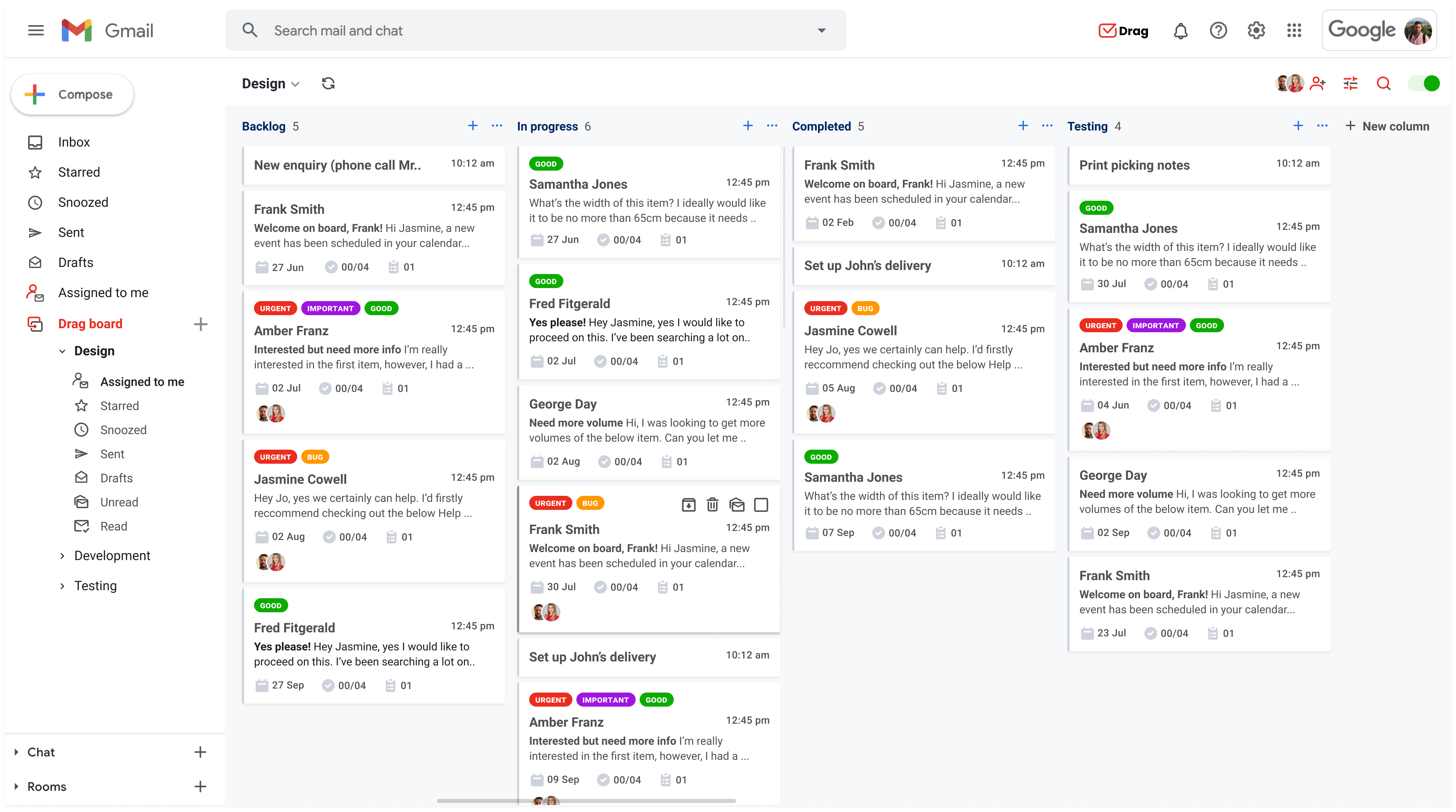
Drag’s interface is similar to Gmail, easy to use and reduces response time. The only difference is that members can all see, reply and track emails.
2. Fit-for-purpose Shared Inbox
Drag was intentionally built as a Gmail shared inbox. It makes it possible for teams to share email addresses without sharing login information. Real shared inboxes enhance security because the members are not sharing an email account using the same password.
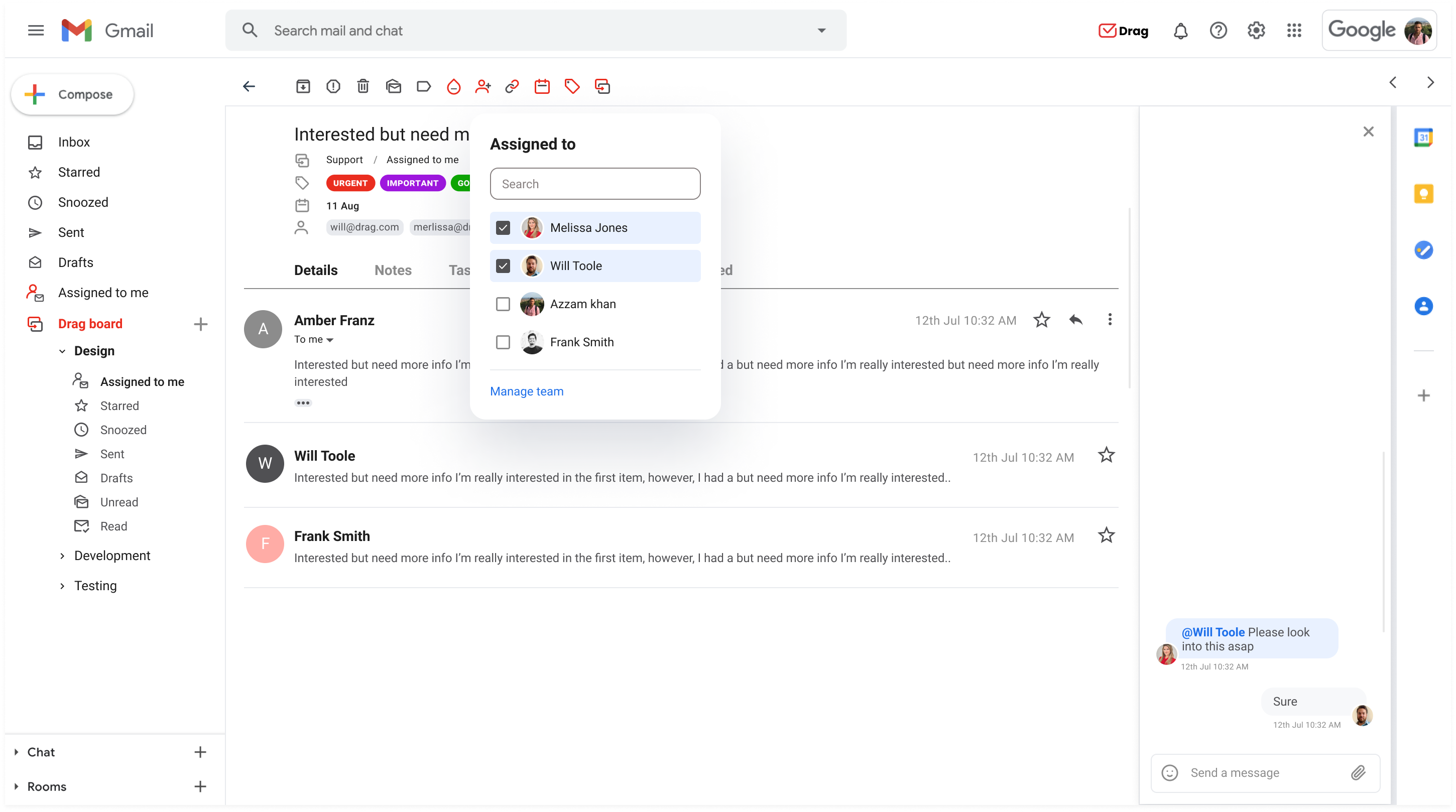
Even better, Drag facilitates transparency. It makes teamwork a walk in the park because everyone is on the same page. All team members can see which tasks each one is working on at the moment, and which emails are pending. They can see emails being replied in real-time, having no chances of duplication or answering the same email twice.
3. Better visualization and categorization
Drag aims to offer a seamless and error-free experience with Kanban boards in gmail. This feature makes it easy for team members to view emails in different stages. They can quickly see which issues are being handled and which ones are pending.
Moreover, Kanban in Gmail makes it possible to create different workflows across the kanban boards and even track different productive activities. By viewing the status of incoming requests, team members can work on each inquiry proactively. There are also no chances of missing any emails. This results in high customer satisfaction and high retention rates.
4. Merge emails to avoid clutter
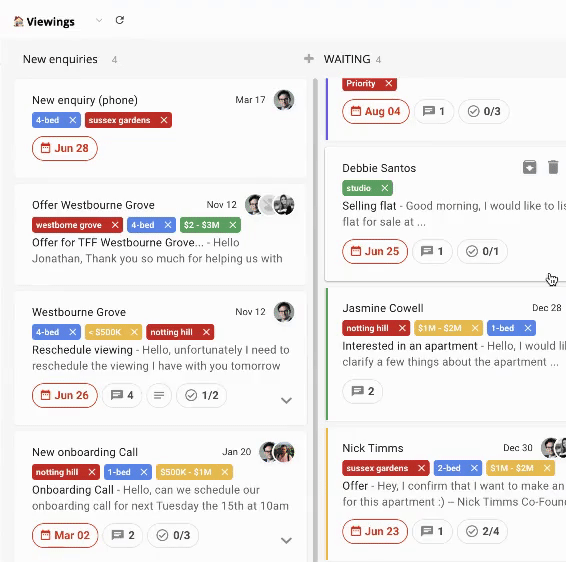
With Drag, you can sort and organize emails with similar inquiries. You can then merge those email cards, for easier organization avoiding cluttering the inbox with so many mails that need the same response. This feature also makes it easier for team members to search and respond to emails within the shortest period.
5. Email notes
One of the critical features of a collaborative inbox is the ability to add notes and subtasks, and that’s precisely what you get from Drag. Team members can add their thoughts to the emails while maintaining a single thread. This makes it easier to keep all information in one place and keep everyone informed.
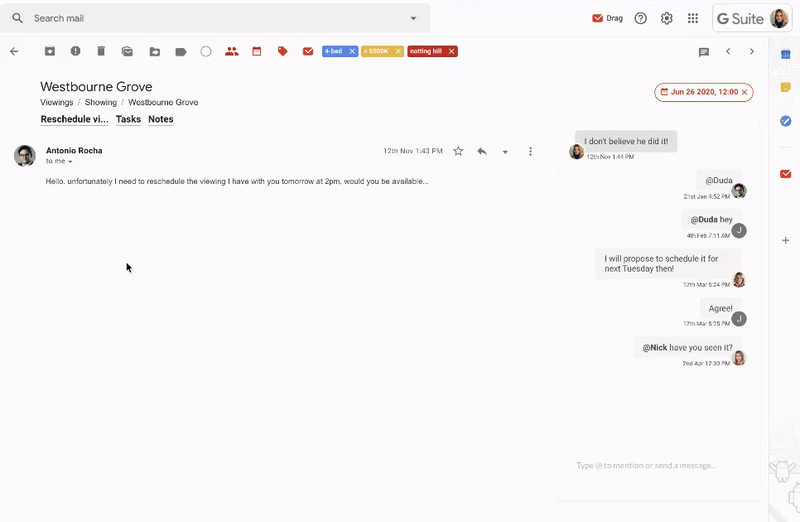
It is also possible to add subtasks to emails. This way, one inquiry can be handled by several individuals without duplication. Each will be informed of the segment they are expected to handle to offer the best solution to customers.
6. Google Calendar integration
Drag integrates with your Google Calendar to let you schedule milestones and set reminders. The idea keeps users aware of deadlines as all the important dates are highlighted in just one places. Furthermore, there will be low chances of late replies.
Team members can decide which tasks to prioritize based on their urgency. They will pay more attention to the complex inquiries and assign less time to the less demanding ones. Setting a due date is the secret to increased customer satisfaction and low complaint cases.
7. Comprehensive automations
Drag features automation tools to eliminate tedious tasks. It can handle repetitive tasks such as filtering customer conversations into the correct shared boards and assigning to different team members. This way, each one will have more time to focus on more productive tasks like looking for solutions to inquiries.
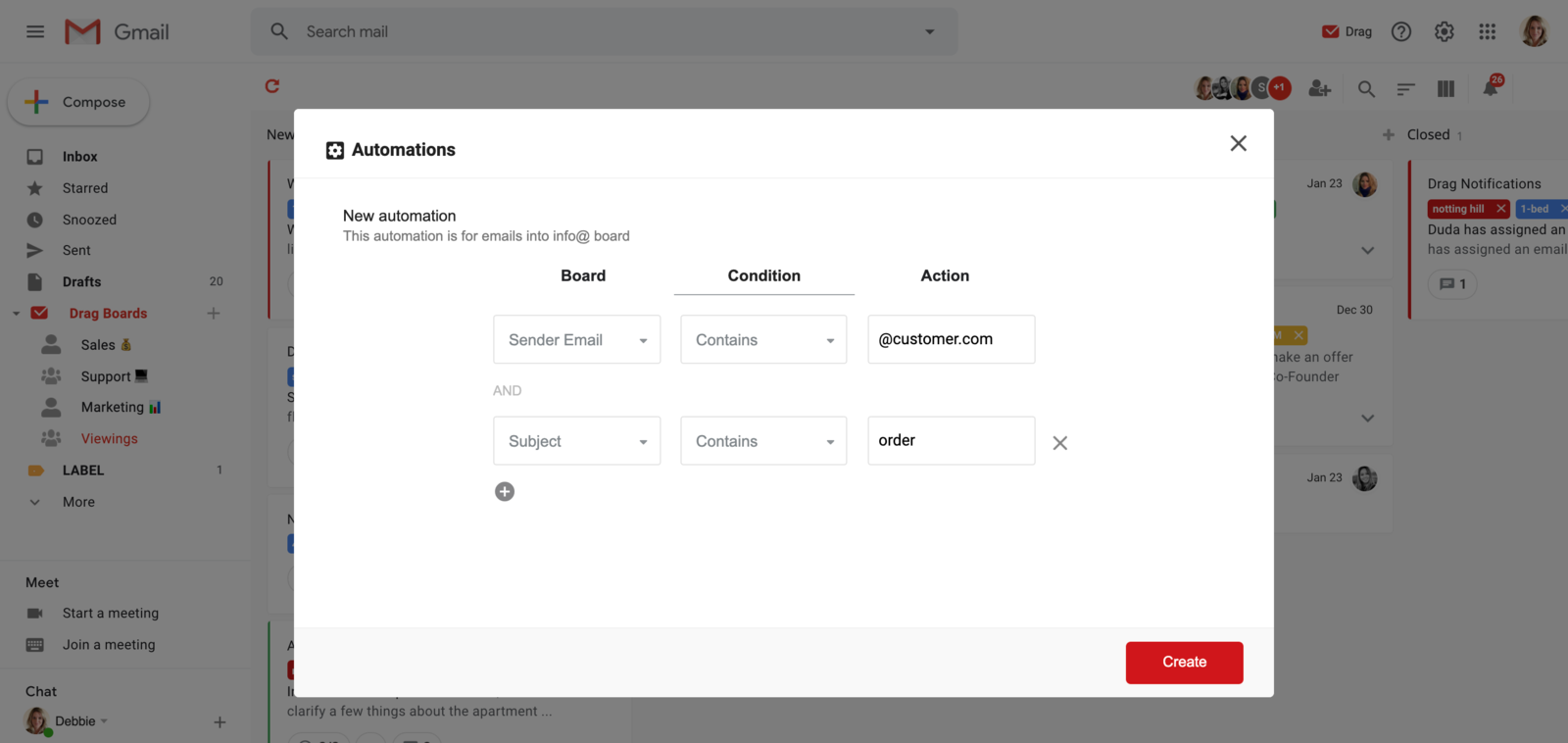
8. Mobile-Friendly
Among the most outstanding Drag features is its mobile app that allows you to keep track of the boards on the go. You don’t have to be seated in the office with your computer to see incoming emails and track their progress.
With a smartphone and internet connection, you can work on inquiries at the comfort of your home, out on the road or anywhere else you want.
9. Reports and analytics
Drag allows you to track team performance to determine if they are productive enough or they need a Push. You can track teams or individuals’ performance, the average first response time and the rate at which they are meeting deadlines.
You can quickly tell if you need to hire more agents to reduce the response time or if some members need more training to keep up with the expected performance rate.
Final Thoughts
A good Collaborative Inbox feature set will undoubtedly increase teams productivity. Check out how Boosted Commerce has improved their customer service with Drag, for example. Ensure to sign up in Drag to enjoy all the amazing benefits of this collaborative inbox tool.
Turn Gmail into a Collaborative Inbox.
Drag turns Gmail into your Team’s Workspace – One single place to support customers, manage tasks and close deals, from the place teams love: Gmail. We are a Techstars-backed Company, trusted by 30,000 users around the World.







